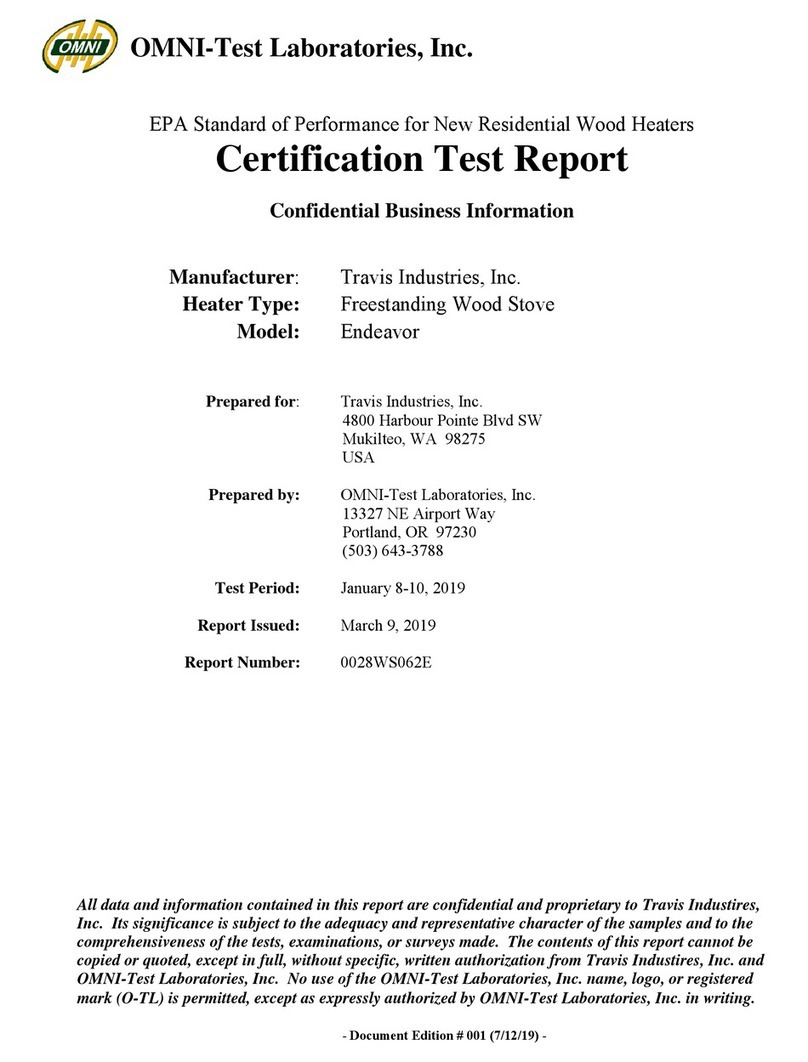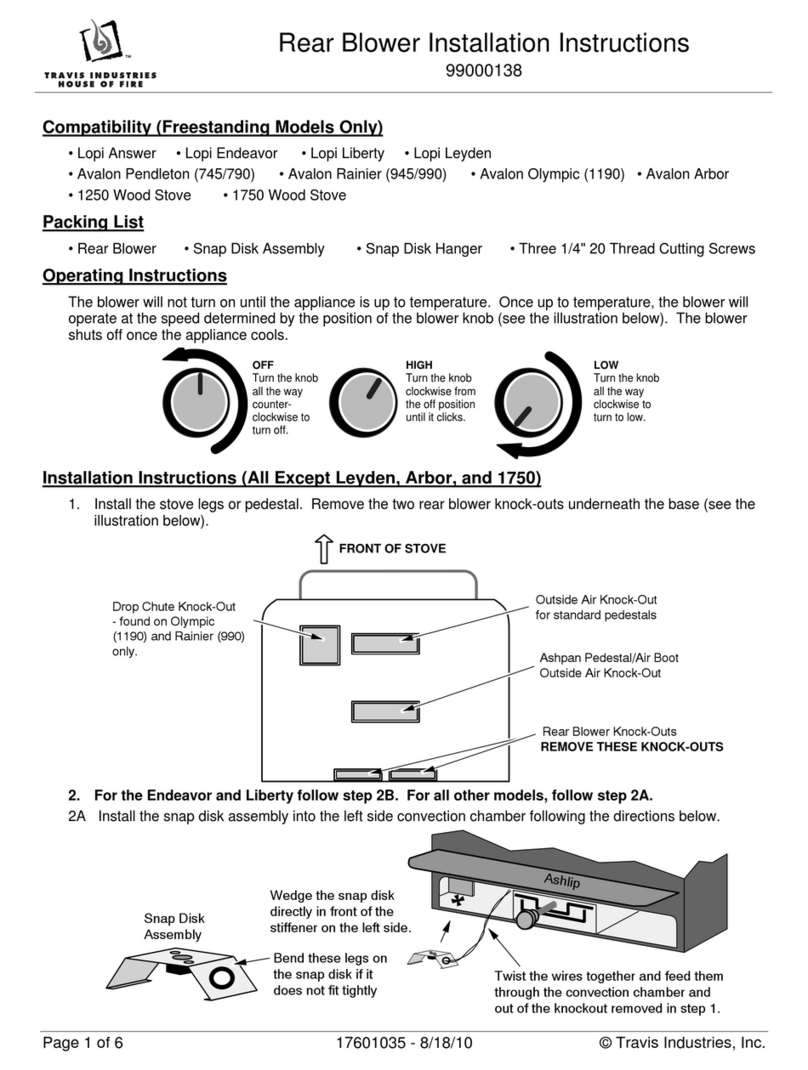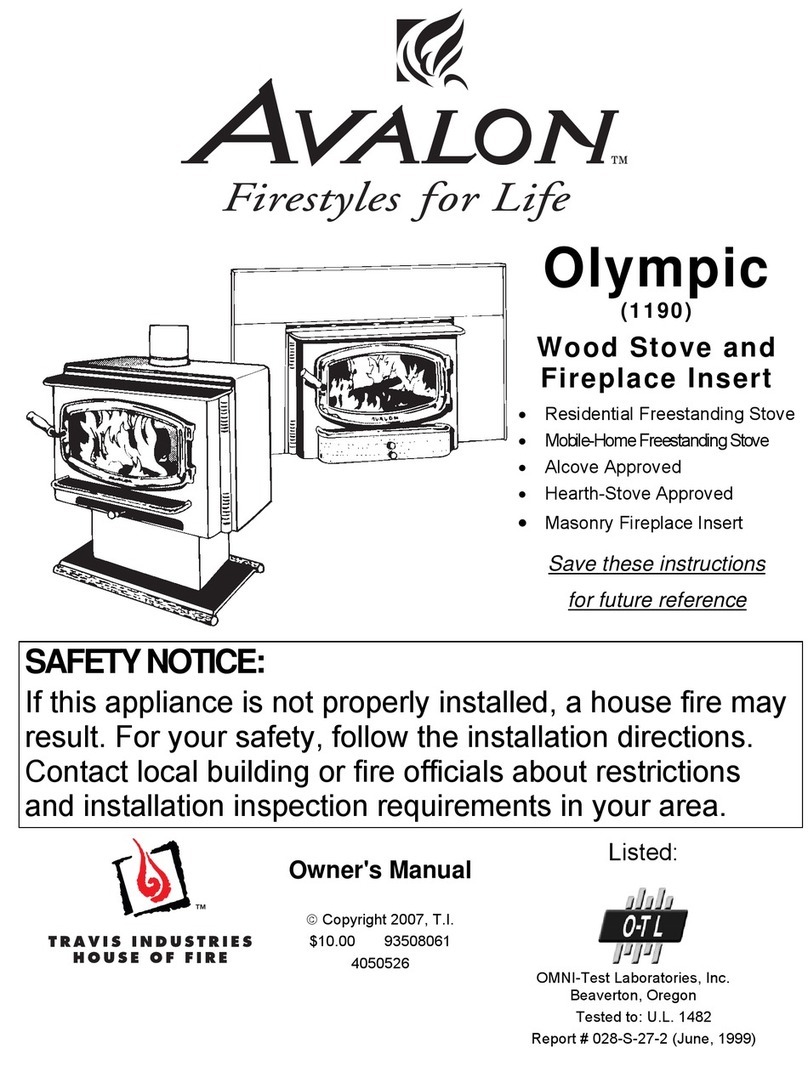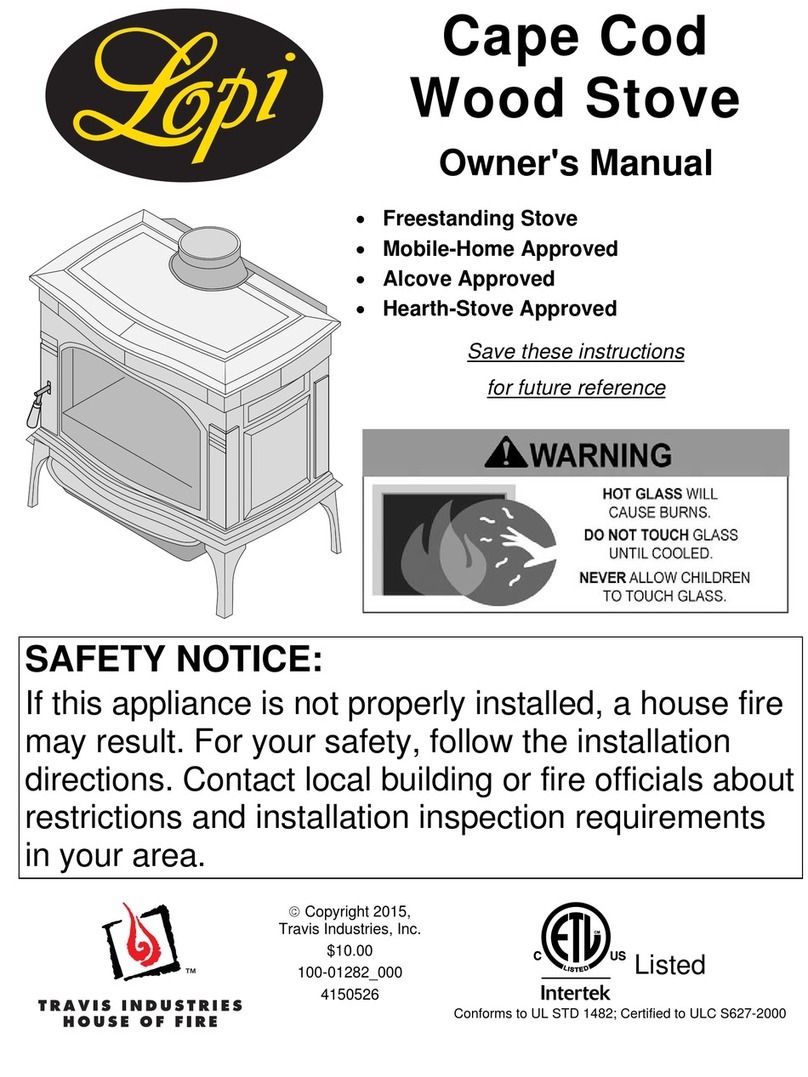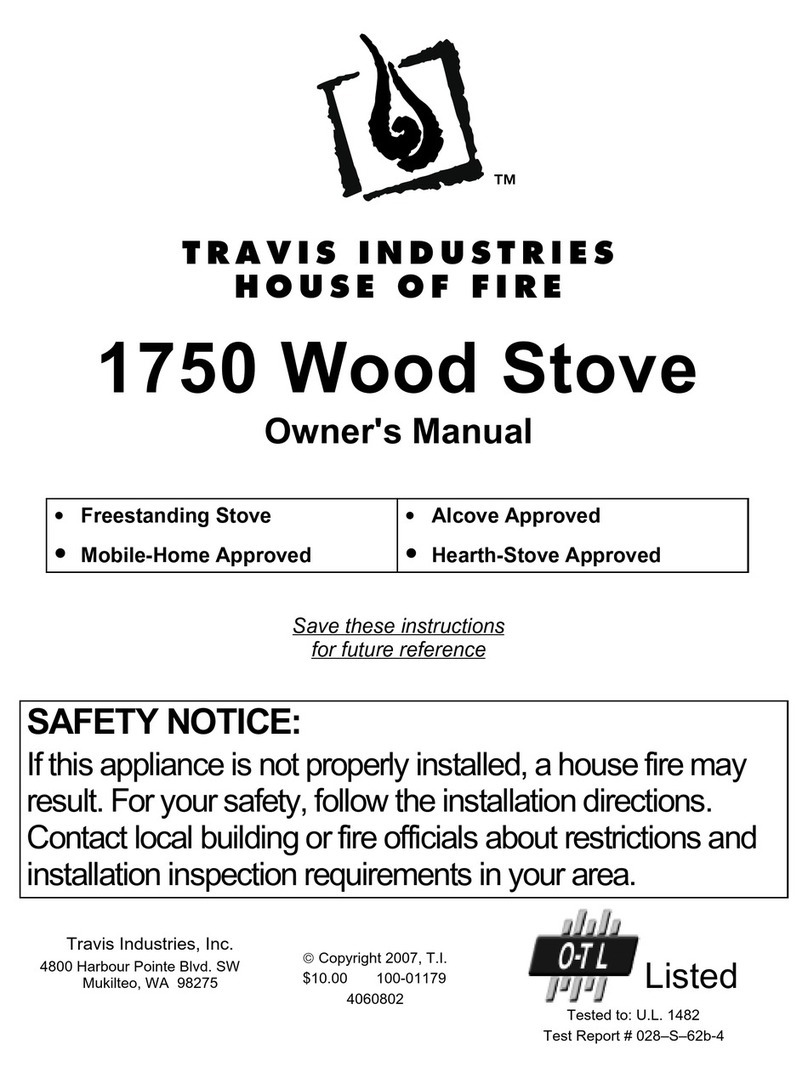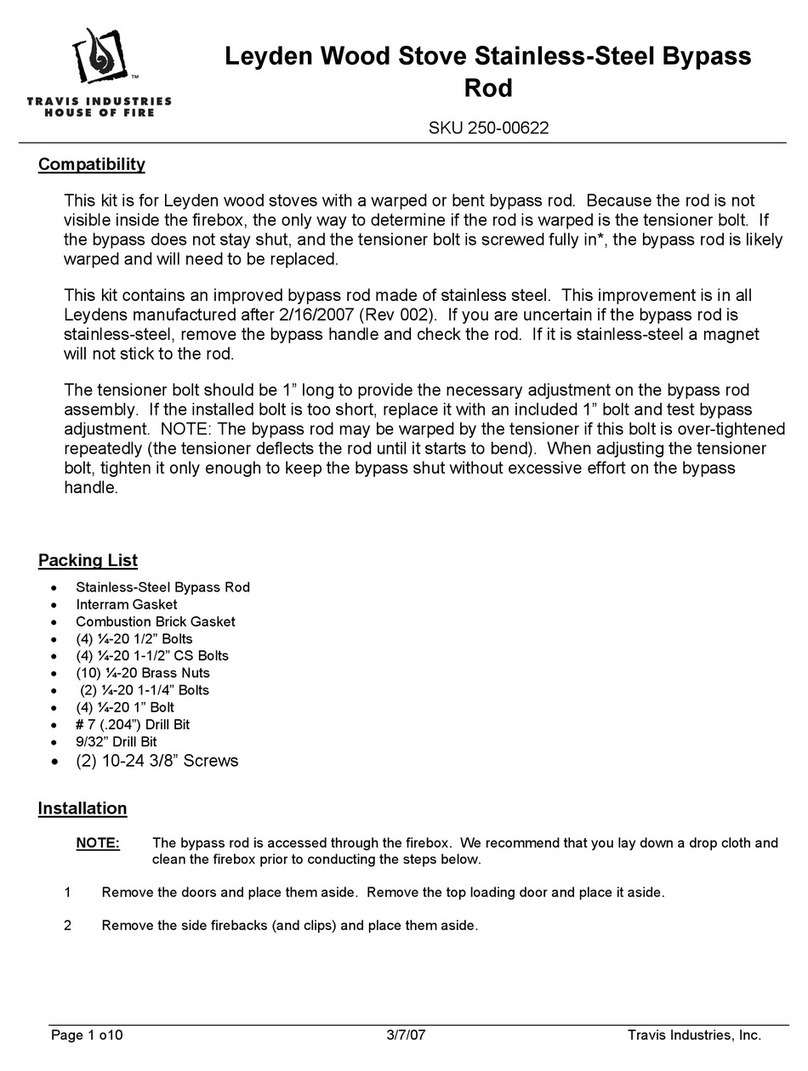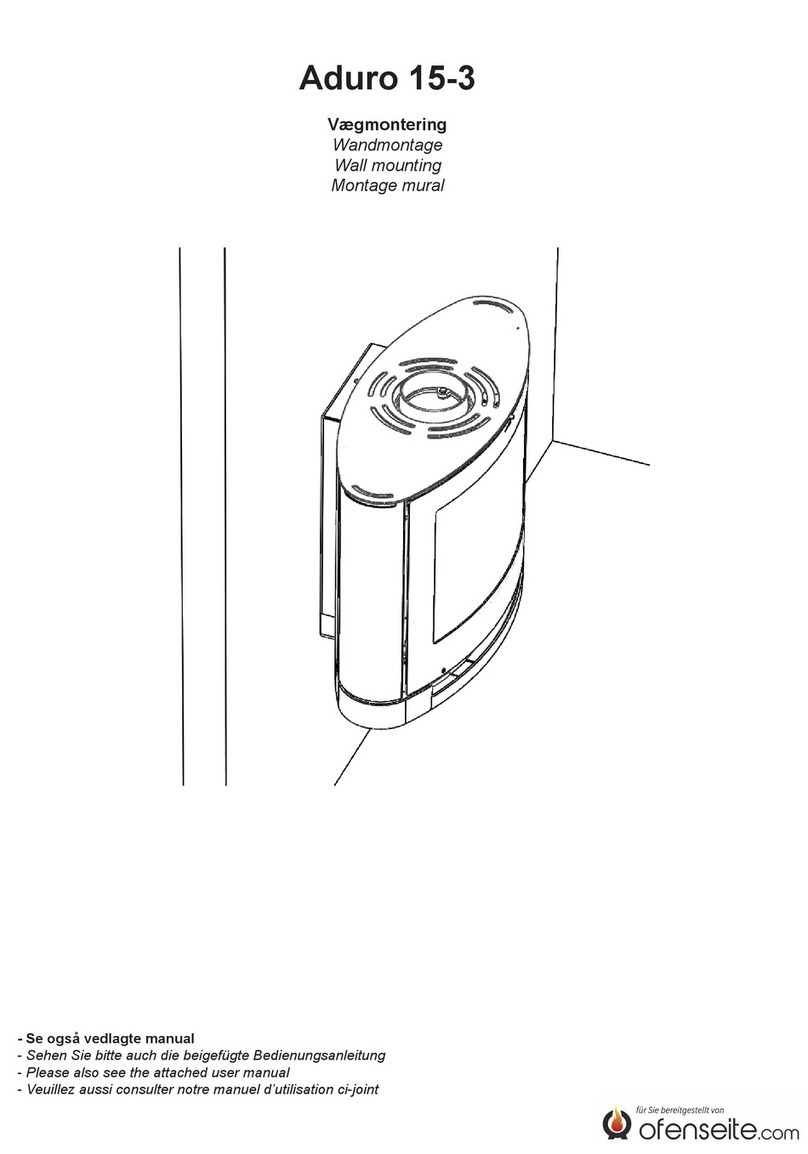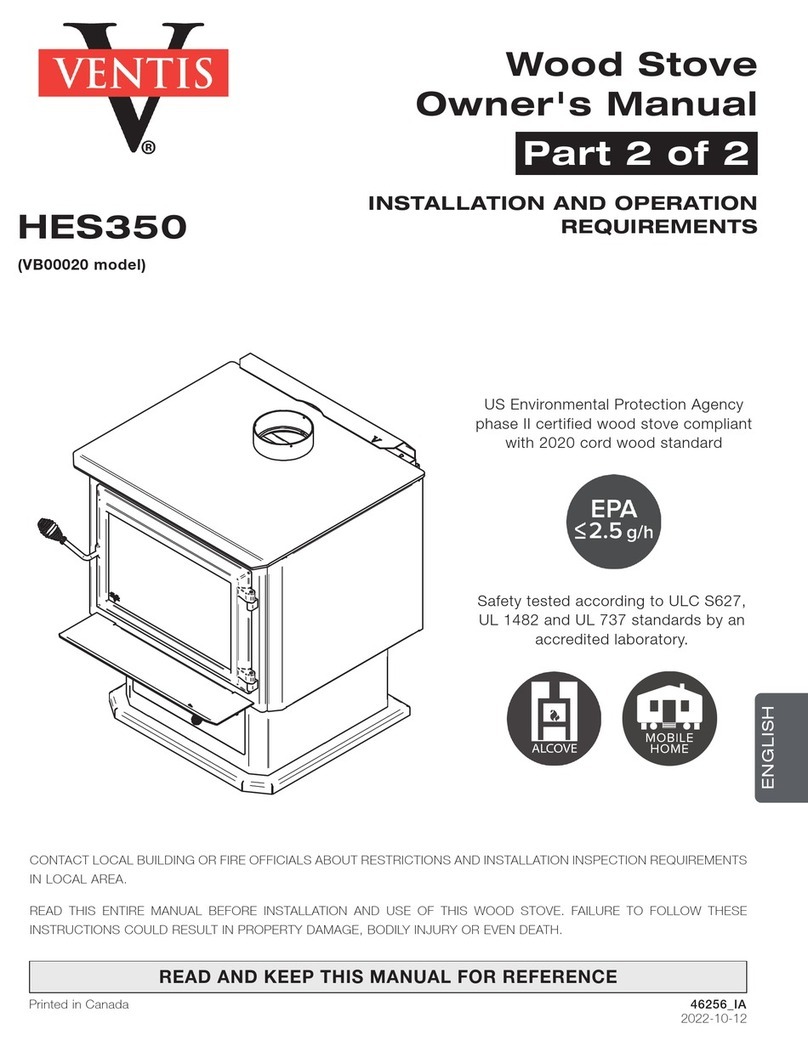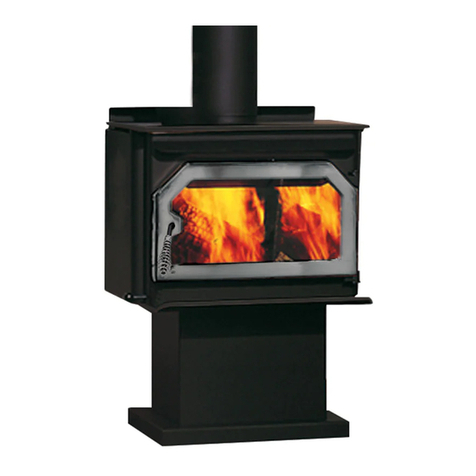
Table of Contents 3
© Travis Industries 100-01332 4121214
Introduction ............................................................2
Important Information............................................2
Installation Options................................................6
Features ..................................................................6
Heating Specifications...........................................6
Dimensions.............................................................6
Emissions ...............................................................6
Planning The Installation.......................................7
Preparation for Installation............................................7
Additional Accessories Needed for Installation ............7
Stove Installation Considerations .................................7
Packing List............................................................8
Floor Protection Requirements ............................8
Stove Placement Requirements ...........................8
Clearances..............................................................8
Top View - Straight Installation.....................................9
Top View - Corner Installation ......................................9
Chimney Connector Requirements......................10
Chimney Requirements.........................................11
Chimney Termination Requirements ...................12
Outside Air Requirements.....................................12
Alcove Installation Requirements ........................13
Mobile Home Requirements..................................14
Standard Ceiling with a Factory Built Chimney ............15
Cathedral Ceiling with a Factory Built Chimney ...........15
Exterior Factory Built Chimney.....................................16
Hearth Stove Positive Connection................................16
Hearth Stove Direct Connection...................................17
Interior or Exterior Masonry Chimney...........................17
Planning The Installation.......................................18
Preparation for Installation............................................18
Additional Accessories Needed for Installation ............18
Installation Considerations............................................18
Packing List............................................................18
Fireplace Requirements ........................................19
Fireplace Altered Tag.............................................19
Insert Placement Requirements ...........................20
Hearth Requirements.............................................20
Masonry Fireplace Requirements.........................20
Zero-Clearance (Metal) Fireplace Requirements.21
Drafting Performance ............................................21
Leveling Bolt Installation.......................................21
Insert with Positive Connection.....................................22
Insert with Direct Connection (Masonry Fireplace) ......22
Safety Notice ..........................................................23
Before Your First Fire ............................................23
Curing the Paint............................................................23
Over-Firing the Stove....................................................23
Opening the Door ..................................................23
Starting a Fire.........................................................24
Adjusting the Burn Rate........................................25
Approximate Air Control Settings.................................25
Ash Removal..........................................................25
Optional Blower Operation ...................................26
Re-Loading the Stove............................................26
Overnight Burn ......................................................26
Normal Operating Sounds....................................26
Hints for Burning...................................................27
Selecting Wood......................................................27
Why Dry Wood is Key..................................................27
Wood Cutting and Storage........................................... 27
Troubleshooting ....................................................28
Daily Maintenance (while stove is in use)...........29
Remove Ash (if necessary).......................................... 29
Clean the Glass (if necessary)..................................... 29
Monthly Maintenance (while appliance is in
use) .........................................................................30
Door and Glass Inspection........................................... 30
Creosote - Formation and Need for Removal..............30
Yearly Maintenance...............................................31
Touch-Up Paint............................................................ 31
Cleaning the Air Duct and Blower (if applicable)......... 31
Firebrick and Baffle Inspection..................................... 31
Door Parts ..............................................................32
Replacing the Glass.....................................................32
Replacing the Door Gasket..........................................32
Replacing the Door Handle.......................................... 32
Firebox Parts..........................................................33
Floor and Side Firebrick Removal & Replacement......33
Baffle Removal & Replacement............................34
Air Tube Removal & Replacement .......................34
Listing Label................................................................. 36
Door Shell Installation...........................................37
Nickel (Cast Iron) Doors Only ......................................38
Stove Leg Installation............................................40
Pedestal (Part # 99200106)....................................41
Using Outside Air with the Pedestal............................. 41
Rear Blower Installation (Part # 99000138) .........42
Outside Air Boot Installation (Part number
99200134)................................................................43
Surround Panels....................................................44
Rectangular Panels:.....................................................44
Installation Instructions................................................. 44
Front Blower (part # 99000123) ............................45
To Switch The Power Cord To The Left Side:............. 45
Installation Instructions................................................. 45


